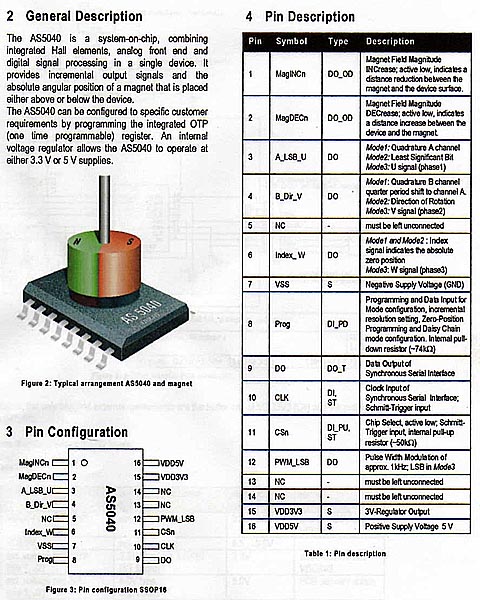|
Principle of Operation
The AS5040 is a system-on-chip, combining integrated hall elements, analog front end and digital signal processing in a single device. It provides incremental output signals and the absolute angular position of a magnet that is placed above or below the device.
This device is manufactured by austriamicrosystems.
The full details can be found on their website at :-http://www.austriamicrosystems.com/
The AS5040 can be configured to specific customer requirements by programming the integrated OTP (one time programmable) register. An internal voltage regulator allows operating the AS5040 device at either 3.3 V or 5 V supplies.
The AS5040 chip consists of a ring of hall elements placed at
the center of the IC in a circle of 2.2mm diameter. The hall elements pick up
the field of a magnet placed above this hall array. This information is
digitized and fed into a digital signal processor which calculates the angle of
the magnet with a resolution of 0.35 degrees or 1024 positions per revolution at
a sampling rate of 10 kHz.
The digital angle information is available in several formats;
as a serial 10 bit data stream, as a pulse-width modulated (PWM) signal or as a
quadrature incremental signal.
Physical Details
The chip itself is very small, measuring approx. 7.8 mm x
5 mm and has 16 pins and can be built up to replace the
potentiometers in many types of antenna rotators giving a far more
accurate and consistent readout than the original setup as there aren't
any mechanical contacts to wear. The only moving part is a
small rare-earth magnet 6 mm in diam. that needs to be attached to a shaft
and placed ~ 0.5 -5 mm above the AS5040. I recommend that you purchase the
correct magnet for this.
|


